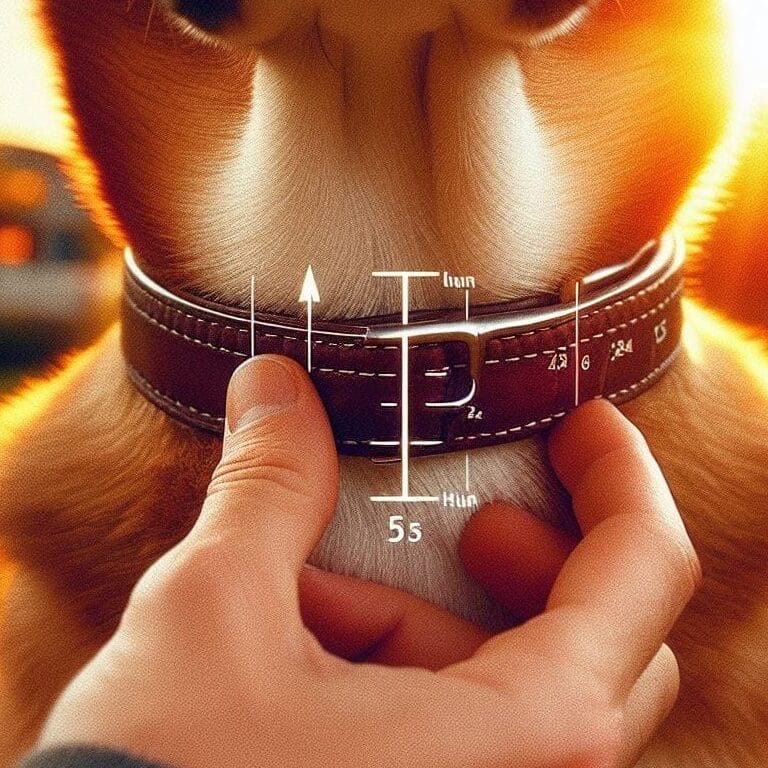“Discover why dog collars cause hair loss in your furry friend. Learn about potential factors, such as collar fit and material quality, and find tips for choosing the right collar to keep your dog’s coat healthy and vibrant. Explore solutions and insights to prevent hair loss and ensure your pup stays happy and stylish!”
Main causes of Hair Loss in Dogs
Hair loss in dogs is a common occurrence due to shedding, but when it becomes excessive, it may show underlying health issues. Recognizing the signs and understanding the causes of hair loss in dogs can help pet owners take appropriate action to ensure their furry friends remain healthy and happy. This guide will explore the primary causes of hair loss in dogs, how to identify them, and potential treatments.
Can a Dog Collar Cause Hair Loss?
Yes, a dog collar cause hair loss, especially around the neck. If you notice your dog losing hair in this area, it’s essential to consider the collar as a potential cause. However, before jumping to conclusions, rule out other factors. High-quality, well-fitting collars are less likely to cause problems. Always choose a collar that is durable, comfortable, and designed for your dog’s specific needs.
Can a Dog Harness Cause Hair Loss?
Dog harnesses can also cause hair loss if they are not properly set or if your dog repeatedly pulls against them. Hair loss at the joints and beneath the harness is a typical symptom. To avoid this, make sure the harness fits properly and do not leave it on your dog for extended periods of time. When you come home, remove the harness to give your dog’s skin a rest.
Main Causes of Hair Loss in Dogs
Pressure Sores
Senior dogs frequently get pressure sores as a result of continuous laying on hard surfaces. These rashes leave bald patches in locations where the dog regularly rests. Soft, comfy bedding can help avoid pressure sores and preserve your dog’s skin from future injury.
Poorly Fitting or Poor Dog Accessories
Friction and hair loss can occur when collars and harnesses are of poor quality or fit. To avoid this, get high-quality accessories that fit your dog correctly. Check the fit on a frequent basis to ensure it is still comfortable and secure.Your dog collar should not be too tight or too loose.
Mange
Mange, caused by mites, can lead to severe itching and hair loss. Localized mange appears as patches of hair loss with red, scaly skin, while generalized mange can cover the entire body, leading to infections, swelling, and crusts. If you suspect mange, seek veterinary advice for proper diagnosis and treatment.
Allergic Reactions
Dogs can have a variety of allergies, the most frequent of which being flea allergies. Flea bites induce extreme itching and scratching, which leads to hair loss. Regular flea prevention and treatment are essential for keeping your dog happy and healthy.
Genetics
Certain dog breeds are genetically linked to hair loss. Greyhounds and Dachshunds may naturally have increased hair loss. While hereditary hair loss cannot be avoided, annual veterinarian check-ups can confirm that no other underlying health conditions are causing the problem.
Thorns or Foreign Objects
Foreign objects like thorns can become embedded in your dog’s skin, leading to localized hair loss. If you notice swelling or excessive licking in a specific area, it might indicate a foreign object. Consult your vet for removal and treatment to prevent infection.
Infections
Infections like ringworm can cause hair loss in dogs. Ringworm frequently appears as a circular region of hair loss, but not always. To avoid infection spread and more hair loss, antifungal creams or medicated shampoos should be applied as soon as possible.
Seasonal Shedding
Seasonal shedding is natural in dogs and can occasionally result in significant hair loss. Dogs lose their fur in reaction to variations in lighting and temperature. Regular grooming and brushing can help to reduce shedding and keep your house clean.
How to prevent dog from hair loss:
Dog collars are very important for you dog safety and security but sometimes it also cause discomfort to your dog.Like if your dog collar is too tight I can cause rashes and hurts your dog neck and sometimes It also cause thining of hairs from the neck or shedding the hair.On the other hand if the dog collar is too loose it can cause your dog escape.But you can easily make your dog dog by following these easy steps or precautions.
Choosing the Right Dog Collar
Choosing the appropriate dog collar is critical in reducing hair loss. High-quality collars constructed of durable and soft materials can reduce friction and skin harm. When choosing a collar for your dog, consider the sort of fur it has. For example, shorter-haired dogs may benefit from softer fabrics, but longer-haired dogs may require collars that do not grab and tug their fur.
FAQs on Hair Loss in Dogs
Should I Take My Dog to the Vet for Hair Loss?
Yes, if your dog is experiencing excessive hair loss accompanied by other symptoms, it is essential to consult a veterinarian. Hair loss can be a sign of infections, allergies, or other health issues that require professional diagnosis and treatment.
Can Certain Foods Cause Hair Loss in Dogs?
Yes, food allergies can lead to hair loss in dogs. Common allergens include eggs, soy, beef, chicken, wheat, and corn. Identifying and eliminating these foods from your dog’s diet can help reduce allergic reactions and hair loss.
How Often Should I Wash My Dog’s Fur?
The frequency of washing your dog depends on their breed, activity level, and environment. Generally, washing your dog every three months is a good rule of thumb. However, more frequent baths might be necessary if your dog is particularly active or prone to getting dirty. Always use a gentle, dog-specific shampoo to avoid irritating their skin.



